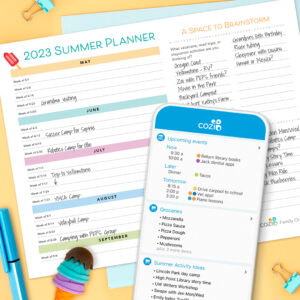As a housewife, cooking for a family with diverse dietary needs can be a daunting task. With the increasing awareness of food allergies, intolerances, and personal preferences, it’s essential to cater to the unique requirements of each family member. In this article, we’ll explore the challenges and provide practical tips on how to cook for a family with different dietary needs.
Understanding the Challenges
Cooking for a family with different dietary needs can be overwhelming, especially when dealing with:
- Food allergies: Common allergens like peanuts, tree nuts, fish, shellfish, milk, eggs, wheat, and soy can cause severe reactions.
- Intolerances: Lactose intolerance, gluten intolerance, and fructose malabsorption require special attention.
- Personal preferences: Vegetarian, vegan, gluten-free, and low-carb diets require careful planning.
- Cultural and religious dietary restrictions: Halal, kosher, and other cultural and religious restrictions must be respected.
Planning and Preparation
To ensure a harmonious and healthy mealtime, follow these planning and preparation tips:
- Create a meal plan: Plan meals in advance, considering each family member’s dietary needs. You can use a meal planning app or a planner to stay organized.
- Stock your pantry: Keep a well-stocked pantry with staples like gluten-free flours, nut butters, and spices to accommodate different dietary needs.
- Label and organize: Label and organize your ingredients, cooking utensils, and cooking surfaces to prevent cross-contamination.
- Cook in bulk: Cooking in bulk can save time and reduce food waste. Consider cooking proteins like chicken, beans, and lentils in bulk and using them in various dishes.
Cooking Techniques and Recipes
Here are some cooking techniques and recipes to help you cater to different dietary needs:
- Grilling and roasting: Grilling and roasting are great ways to cook proteins and vegetables without added oils or sauces.
- Stir-frying: Stir-frying is a quick and easy way to cook a variety of ingredients, including vegetables, proteins, and grains.
- Slow cooking: Slow cookers are perfect for cooking beans, lentils, and grains, which can be used in a variety of dishes.
- Gluten-free baking: Use gluten-free flours and ingredients to bake delicious treats like cakes, cookies, and bread.
Recipe Ideas
Here are some recipe ideas that cater to different dietary needs:
- Vegan quinoa bowl: Cook quinoa and top with roasted vegetables, avocado, and a drizzle of tahini sauce.
- Gluten-free chicken parmesan: Bread chicken breasts with gluten-free breadcrumbs and top with marinara sauce and melted mozzarella cheese.
- Lactose-free lasagna: Use lactose-free cheese and a gluten-free pasta to create a delicious and satisfying lasagna.
- Grilled salmon with roasted vegetables: Grill salmon fillets and serve with a variety of roasted vegetables, such as asparagus, Brussels sprouts, and sweet potatoes.
Tips for a Stress-Free Kitchen
To maintain a stress-free kitchen, follow these additional tips:
- Clean as you go: Clean up as you cook to prevent clutter and mess.
- Label leftovers: Label leftovers with the date and contents to ensure safe consumption.
- Communicate with your family: Encourage family members to communicate their dietary needs and preferences to ensure everyone’s needs are met.
- Take breaks: Don’t be afraid to take breaks and ask for help when needed. Cooking for a family with different dietary needs can be overwhelming, so prioritize self-care and ask for assistance when needed.
Conclusion
Cooking for a family with different dietary needs requires careful planning, preparation, and creativity. By understanding the challenges, planning ahead, and using the right cooking techniques and recipes, you can create a harmonious and healthy mealtime experience for your family. Remember to prioritize self-care, communicate with your family, and don’t be afraid to ask for help when needed. With practice and patience, you’ll become a pro at cooking for a family with different dietary needs.












